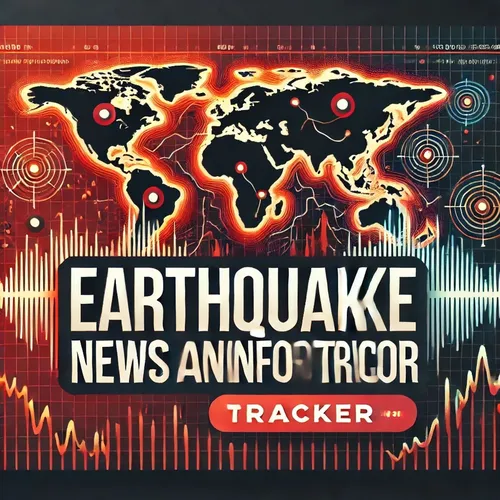"Earthquakes Shake Across the U.S. and Worldwide: A Reminder to Stay Prepared"
- Author
- Quiet. Please
- Published
- Sat 09 Aug 2025
- Episode Link
- https://www.spreaker.com/episode/earthquakes-shake-across-the-u-s-and-worldwide-a-reminder-to-stay-prepared--67314536
In the past week, the United States experienced a series of moderate earthquakes that continued to draw attention to seismic activity nationwide. According to the United States Geological Survey, on August 5th a magnitude three point five earthquake struck near Ontario, California, at a depth of roughly four miles. This event was widely felt, with more than a thousand reports coming in from residents across the area. The same day, the eastern United States also felt a jolt as a two point seven magnitude quake was recorded near Hillsdale, New Jersey, at a depth of nearly eight miles. Earlier in the week, on August 2nd, a magnitude three point zero event was felt near Hasbrouck Heights, New Jersey. Though all these quakes were low in magnitude and resulted in no significant damage, their recurrence so close together has been unusual for the northeastern region, highlighting a pattern of increased seismic activity in areas not traditionally known for frequent earthquakes, as reported by iHeart and the USGS.
There were additional tremors reported in Utah and throughout the United States in the past week, most of which were minor and did not cause reported injuries or major disruptions, according to data from 642weather dot com. These small events reinforce the United States Geological Survey’s ongoing reminder that even lower-magnitude quakes can serve as important reminders of the need for earthquake preparedness.
While domestic events were largely moderate, global seismic headlines this week were dominated by the historic eight point eight magnitude earthquake that struck off the eastern coast of Russia’s Kamchatka Peninsula on July 29th. According to the United States Geological Survey and Wikipedia, this was the most powerful earthquake in over a decade worldwide and ranks among the six strongest ever recorded. Despite its magnitude, damage in the Kamchatka region was moderate compared to the size of the quake, though multiple injuries were reported in Kamchatka and Sakhalin, and at least one person in Japan died during tsunami-related evacuations. This event triggered a Pacific-wide tsunami that was less severe than feared but still led to notable waves on U.S. shores. Tsunami waves of up to five point seven feet were recorded in Kahului, Maui, and nearly five feet in Hilo, Hawaii, as reported by the United States Tsunami Warning System. Along the California coast, Crescent City experienced a three point six foot tsuanmi wave, the highest ever recorded there, with similar activity observed in Arena Cove and Humboldt Bay. Local authorities and the National Weather Service urged residents to stay away from coastlines as tsunami waves continued moving ashore throughout the night, especially around high tide.
These events underscore both the unpredictability and the far-reaching impact of major seismic activity, with scientists at the United States Geological Survey advising that aftershocks from major earthquakes like the recent Kamchatka event may continue for weeks, keeping the spotlight on worldwide seismic monitoring efforts. In summary, the past week’s seismic activity reminds both residents and officials throughout the United States to remain vigilant and prepared, even when earthquakes occur far beyond American borders.
Some great Deals https://amzn.to/49SJ3Qs
For more check out http://www.quietplease.ai
